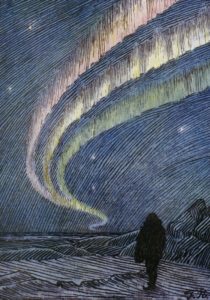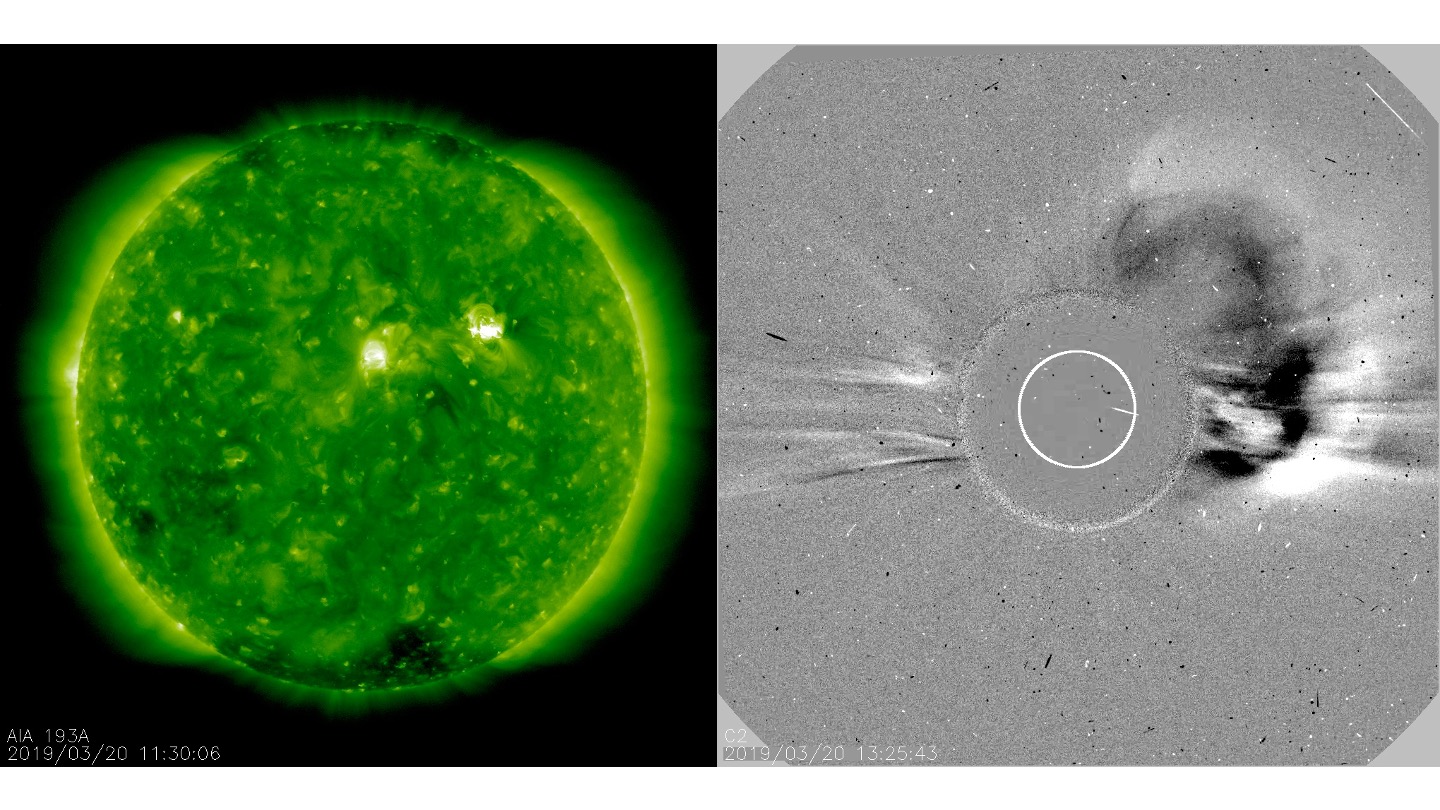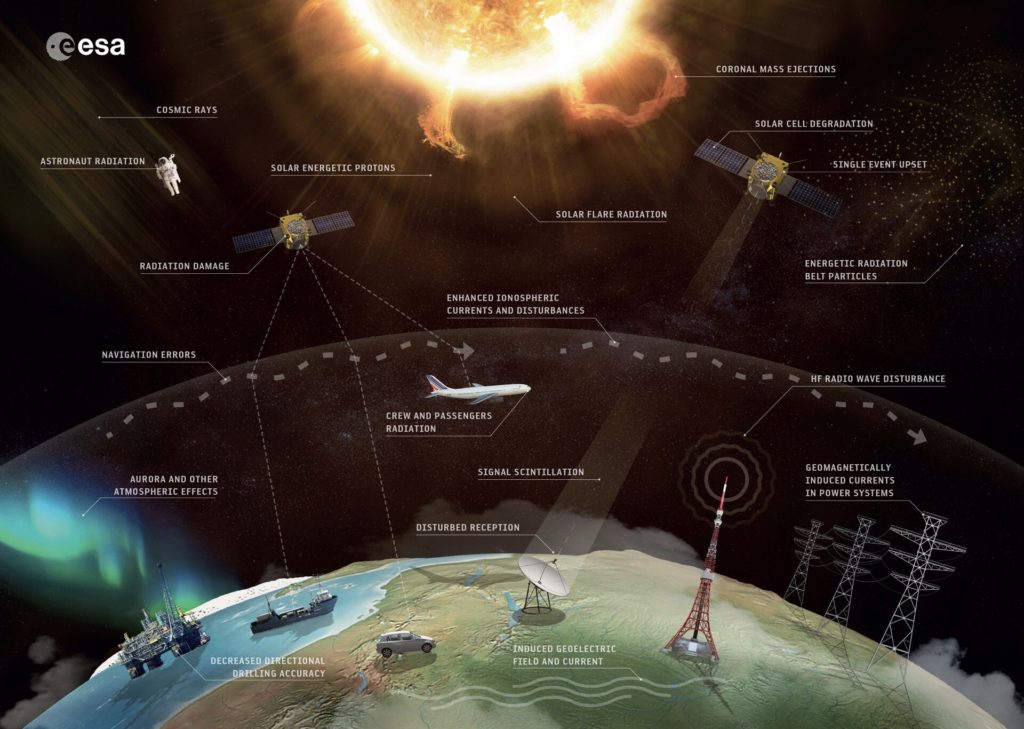 The first Sun-Earth connection observations were made by Edmund Halley, after witnessing a spectacular auroral display in March 1716. He suggested that particles moving along the Earth’s magnetic field lines were the cause of the aurora. Soon after, Anders Celcius and Olav Hiorter in 1747 discovered the temporal coincidence between compass needle variations and bright auroral displays, and that the disturbances occurred in planetary scale. In 1860, Richard Carrington made the connection between solar flares and bright auroras.
The first Sun-Earth connection observations were made by Edmund Halley, after witnessing a spectacular auroral display in March 1716. He suggested that particles moving along the Earth’s magnetic field lines were the cause of the aurora. Soon after, Anders Celcius and Olav Hiorter in 1747 discovered the temporal coincidence between compass needle variations and bright auroral displays, and that the disturbances occurred in planetary scale. In 1860, Richard Carrington made the connection between solar flares and bright auroras.
Auroras can reveal details of processes in near-Earth space, and are therefore monitored regularly. For example, NASA’s THEMIS satellite mission includes a network of all-sky cameras monitoring the auroral light continuously. Combining satellite measurements of energetic particles and magnetic field changes in space, we can unravel the ways the Sun impacts the Earth and its environment.
Today’s digital cameras (even one on your cell phone) are good enough to take great auroral photos. There are many forums that collect auroral images, such as NASA’s Aurorasaurus. Images taken by the public have been used to make scientific discoveries, for example streaky auroral forms named STEVE, or horizontal wavy auroral forms termed auroral dunes.
The Sun is the origin of auroras and other space weather phenomena. Solar flares are brightenings on the solar surface, while coronal mass ejections (CME) are vast plasma clouds ejected from the solar surface to the interplanetary space. Richard Carrington realized that the solar flares were associated with geomagnetic activity, but it took another 100 years to show that the it takes a coronal mass ejection to create a geomagnetic storm in the Earth’s space environment.

The increased utilization of space has added a new practical flavor to understanding how the solar activity influences us at Earth, because the rapid time variations in the geospace pose a hazard to technological systems and humans in space as well as on Earth. The adverse conditions in the space environment can cause disruption of satellite operations, communications, navigation, and electric power distribution grids on ground, leading to a variety of societal problems and economic losses. Image credit European Space Agency.

